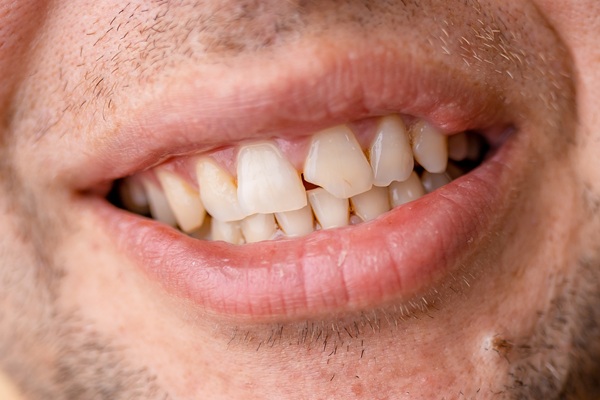What to Expect When Getting a Dental Onlay

Having a bright, natural smile can restore one’s confidence, and a dental onlay can help get this result. An onlay, also known as a partial crown, is used in restorative dentistry for multiple reasons. It can help protect the teeth as well as rejuvenate the smile.
Benefits of getting a dental onlay
An onlay can be an alternative for a traditional metal filling when a cavity is big enough to cause damage to the cusps of the tooth. It can also be used when something else caused damage to the teeth.
In addition to replacing damaged or decayed areas of the teeth, a dental onlay can help increase the whiteness and brightness of a smile. Onlays are usually made up of resin or porcelain, which both look natural and can be matched to the shades of the other teeth.
Another benefit of onlays is that they extend the life of a tooth, being durable and resistant to degradation and damage. This type of restorative dentistry lasts longer than crowns or fillings. An onlay also improves dental hygiene because it prevents bacteria and other infections from getting into the tooth.
Onlay procedure
The placement of a dental onlay typically requires two visits unless the dentist has a lab on site.
Removal process
During the initial visit, the dentist removes the cavity or damaged part of the tooth. The dentist only takes out the decayed portion and keeps as much of the natural tooth as possible.
Mold creation
The next step is to take a mold impression of the affected tooth. Dental putty is laid over the tooth and, when it is ready, it is sent to the lab, which constructs the onlay.
Temporary replacement
To protect the exposed tooth until the onlay is prepared, the dentist places a filling. This temporarily keeps out food and bacteria as well as prevents sensitivity to hot or cold temperatures.
Onlay preparation
Once the lab has finished fabricating the permanent onlay, the patient comes in for the second and final appointment. The dentist removes the temporary filling, cleans the tooth, and prepares it for the placement of the onlay. The dentist places the onlay and makes sure it fits properly.
Bonding process
Once the onlay fits perfectly, the dentist uses dental cement to bond it to the tooth. It then is polished so it is smooth and looks like the teeth surrounding it.
Aftercare
For the first day or two, the patient may experience sensitivity around the affected tooth. During this time, cold and hot beverages should be avoided, as should sticky foods. If the bite seems off, the dentist should be contacted to make any adjustments.
Once the sensitivity and soreness go away, good dental hygiene is important. This includes brushing at least twice a day, flossing, and getting regular dental exams.
Conclusion
People who are looking for restorative dentistry that also results in bright and natural-looking teeth may want to consider a dental onlay. The dentist can discuss its advantages and recommend if it is a good choice for your needs.
Request an appointment here: https://www.lilburnfamilydentistry.com or call Lilburn Family Dentistry at (770) 800-0178 for an appointment in our Lilburn office.
Check out what others are saying about our dental services on Yelp: Dental Crowns and Dental Bridges in Lilburn, GA.
Recent Posts
Dental crowns are often costly and require that a dentist remove a significant amount of the tooth's structure to place them. Read on to learn about dental crown alternatives. Other treatment alternatives are sometimes available that are either less expensive or significantly less invasive. Dental crowns are frequently used to restore severely damaged teeth.The following…
A dental crown can restore a damaged, worn, or weakened tooth. This restoration can bring back your healthy smile and stable dental function. Knowing the benefits of dental caps can motivate you to set an appointment soon. Here are the benefits of a dental crown that you must consider.Losing a tooth can be annoying, especially…
A dental crown is often the best option to repair the affected area when a patient is dealing with severe tooth damage or decay. Dental crowns can also protect weak or brittle teeth, improve the patient's appearance, and correct many other dental issues. For many people, this type of treatment helps to both restore and…
The general purpose of dental crown treatment is to restore the size, shape, function, appearance, and health of a damaged tooth. During the process, the dentist can ensure the crown restores or protects the natural structure of the tooth. This allows the tooth to keep its ideal natural appearance and helps with function as well. The…


